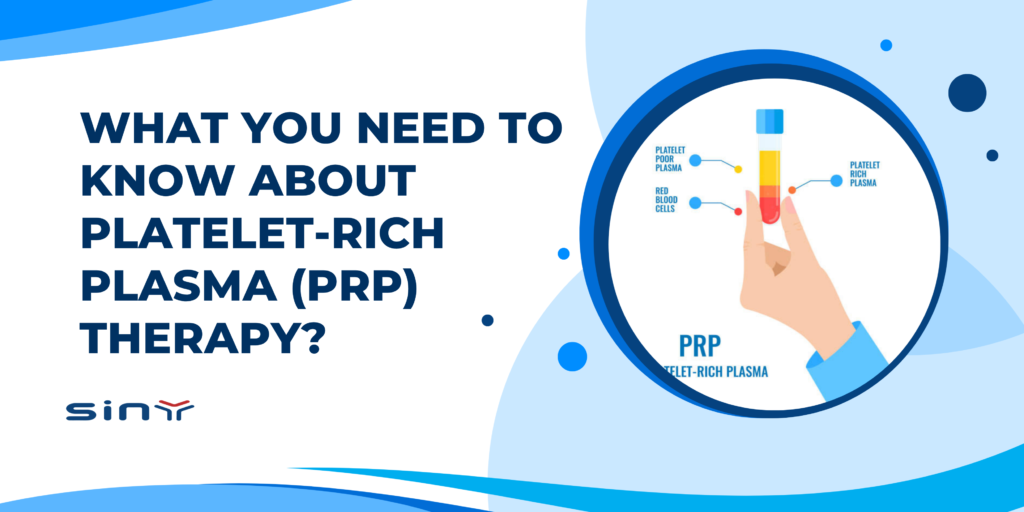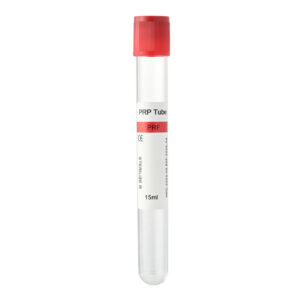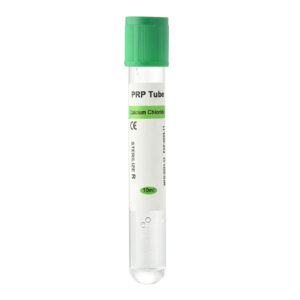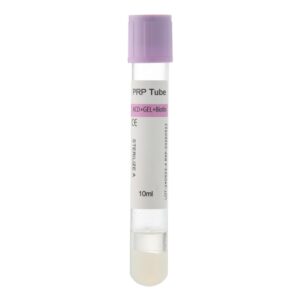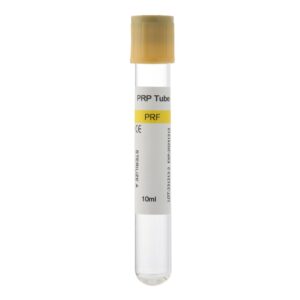What you need to know about platelet-rich plasma (PRP) therapy? Regenerative medicine is rapidly transforming patient care, and at the forefront of this evolution is Platelet-Rich Plasma (PRP) therapy. This innovative treatment, which utilizes a patient’s own blood to accelerate healing, has gained significant traction across various medical fields for its efficacy and safety. For private clinics, healthcare providers, and medical supply distributors, incorporating PRP therapy presents a significant opportunity. However, the success of any PRP procedure is not solely dependent on the practitioner’s skill; it is fundamentally linked to the quality of the plasma preparation. This begins with a crucial, yet often overlooked component: the PRP tube. The market is saturated with options, making the selection process daunting.
Understanding the Mechanism and Diverse Applications of PRP Therapy
At its core, Platelet-Rich Plasma therapy is a sophisticated medical treatment that harnesses the body’s innate healing capabilities to repair and regenerate damaged tissues. The process involves drawing a small sample of the patient’s blood, which is then placed in a centrifuge to separate its components. This centrifugation process concentrates the platelets within the plasma. The resulting platelet-rich plasma, which can contain 5 to 10 times more platelets than normal blood, is then injected into the targeted treatment area. These concentrated platelets release a host of growth factors and cytokines, which are signaling proteins that orchestrate the body’s healing cascade. They stimulate cellular proliferation, promote the formation of new tissue and blood vessels, and effectively manage inflammation, accelerating recovery and regeneration in a highly targeted manner.
The versatility of this mechanism has led to a broad spectrum of clinical applications, making it a valuable tool for numerous specialties.
- Orthopedics and Sports Medicine: Clinicians widely use PRP injections to treat chronic tendon injuries such as tennis elbow and Achilles tendonitis, as well as ligament sprains and muscle injuries. It offers a non-surgical alternative for managing the pain associated with osteoarthritis by reducing inflammation and promoting cartilage repair.
- Aesthetic Dermatology: In aesthetics, PRP is celebrated for its rejuvenating properties. Used topically with microneedling or injected directly, it stimulates collagen and elastin production, which helps to reduce fine lines, improve skin texture, and restore a youthful glow.
- Hair Restoration: PRP has emerged as a promising non-surgical solution for hair loss. When injected into the scalp, the growth factors can stimulate dormant hair follicles, increase the thickness of the hair shaft, and promote new hair growth for conditions like androgenic alopecia.
- Post-Surgical Healing: Clinicians also use PRP to enhance the body’s repair processes following surgery. Applying it to the surgical site can help accelerate tissue healing. Reduce pain and swelling, and potentially lower the risk of complications.
The effectiveness across all these applications hinges on one critical factor: the quality and concentration of the platelets. This underscores the need for a preparation process that is both precise and reliable. To ensure your practice can consistently achieve the high-concentration PRP required for these diverse treatments, consider exploring the advanced tube technology available on the Siny PRP product page.
Why Your Choice of PRP Tube is a Critical Factor for Success
While the concept of PRP is straightforward, the clinical outcome is profoundly influenced by the quality of the preparation. The foundational step of this preparation is the collection and separation of blood, which occurs within the PRP tube. Therefore, the design and composition of the tube are not minor details; they are critical variables that directly impact the efficacy and safety of the final product. Manufacturers engineer superior PRP tubes to maximize platelet recovery while ensuring the resulting plasma remains free from contaminants and undesirable elements such as red blood cells.
Several key features differentiate a high-quality, medical-grade PRP tube from a standard blood collection tube.
- Biocompatible Materials: The tube must use materials that do not react with the blood or cause platelets to activate prematurely. This design preserves the growth factors until clinicians inject them into the treatment site.
- Optimal Anticoagulant: The type and volume of the anticoagulant (like sodium citrate) are precisely calculated to prevent clotting during processing without damaging the platelets. An incorrect formulation can compromise the entire sample.
- Advanced Separation Gel: Many premium tubes contain a proprietary separation gel. This gel has a specific density that, after centrifugation, forms a stable barrier between the platelets in the plasma and the heavier red blood cells. This is crucial for preventing contamination and allowing for easy, accurate extraction of the PRP. Inferior gels can lead to a less defined separation, resulting in a lower platelet yield.
- Sterility and Pyrogen-Free Interior: To guarantee patient safety, PRP tubes must be sterile and non-pyrogenic, eliminating the risk of infection or inflammatory reactions from the device itself.
Using suboptimal tubes can lead to a cascade of negative consequences, including inconsistent platelet concentrations, which can make treatments less effective and increase the risk of adverse patient reactions. For distributors, supplying clinics with unreliable products can damage credibility. For practitioners, it can lead to poor patient outcomes and harm the practice’s reputation. Therefore, investing in a product that adheres to stringent regulatory standards, such as CE and ISO certifications, is non-negotiable for any serious medical practice. To see how a professionally engineered product can make a difference in your clinical results. We invite you to review the specifications of our advanced solutions on the Siny PRP product page.
How to Choose a PRP Supplier: Key Considerations for Your Clinic
Selecting a PRP product supplier extends beyond a simple purchasing decision; it’s about forming a partnership that supports the clinical and business success of your practice. A great supplier doesn’t just sell you a product; they provide a reliable service. High-quality tool that ensures you can deliver safe and effective treatments to your patients time and time again. With many suppliers in the market, clinics and distributors need to apply rigorous criteria when making their choice.
Here are the key factors to consider when evaluating a potential PRP supplier:
- Uncompromising Product Quality and Consistency: The supplier’s primary commitment should be to quality. Ask for detailed product specifications, including the materials used, the type of separation gel and anticoagulant, and data validating the platelet recovery and concentration rates. Reputable suppliers will be transparent and provide evidence of their product’s performance.
- Regulatory Compliance and Certification: Ensure the supplier’s products meet all necessary regulatory standards for your region. Such as ISO or CE marks. This certification is not just a formality; it guarantees that manufacturers produce the products in a controlled environment and ensure they are safe for medical use.
- Clinical Support and Expertise: A knowledgeable supplier can be an invaluable resource. They should be able to answer technical questions about their products and the PRP preparation process. Some suppliers may also offer training resources or educational materials to help your practice optimize its PRP protocols.
- Supply Chain Reliability: Consistency in your supply chain is crucial for the smooth operation of your clinic. Choose a supplier known for its reliability, with a strong inventory and a track record of on-time deliveries. This prevents disruptions to your patient scheduling and ensures you always have the necessary consumables on hand.
- Transparent and Fair Pricing: While cost is an important consideration, the cheapest option is rarely the best when it comes to medical devices. Look for a supplier that offers a fair price for a high-quality product. A supplier like Siny PRP is focused on providing exceptional value by ensuring that every tube delivers consistent, high-purity plasma, which ultimately translates to better patient outcomes and a stronger return on investment.
FAQs
1. What exactly is Platelet-Rich Plasma (PRP) Therapy?
PRP therapy is a regenerative medical treatment that uses a concentrated solution of platelets derived from the patient’s own blood. Clinicians inject this concentrate into injured or diseased tissue to harness the healing power of the platelets’ growth factors, which help accelerate tissue repair and regeneration.
2. What are the primary benefits of using PRP therapy?
The main benefits of PRP therapy include accelerating the body’s natural healing processes, reducing pain and inflammation, and improving tissue regeneration. Since it uses the patient’s own blood. It is a safe treatment with minimal risk of allergic reactions or side effects. It also offers a non-surgical option for many musculoskeletal conditions and aesthetic concerns.
3. How important is platelet concentration for the success of the treatment?
Platelet concentration is critically important. A higher concentration of platelets delivers a greater payload of growth factors to the treatment site, enhancing the regenerative signal and promoting more robust healing. The quality of the PRP tube and centrifuge system directly determines the final concentration.
4. What should I look for in a high-quality PRP tube?
When selecting a PRP tube, choose one that uses biocompatible materials, incorporates a high-quality separation gel to ensure clean separation of blood components. Includes an appropriate anticoagulant and meets certification standards for sterility and non-pyrogenicity. Adherence to regulatory standards like CE and ISO is a key indicator of quality.
5. Why is the choice of a PRP supplier so important for my practice?
Your PRP supplier is a key partner in your practice’s success. A reliable supplier ensures you receive consistently high-quality, safe, and effective products. Which translates directly to better patient outcomes and a stronger reputation. A good supplier also provides regulatory compliance, reliable delivery, and expert support, allowing you to perform treatments with confidence.

